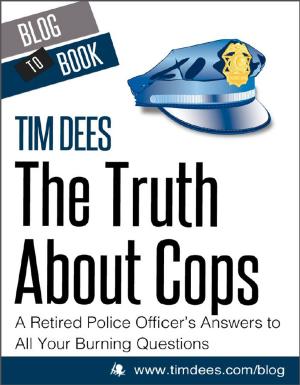| Author: | Charles Limley | ISBN: | 9781614646631 |
| Publisher: | Hyperink | Publication: | July 30, 2012 |
| Imprint: | Hyperink | Language: | English |
| Author: | Charles Limley |
| ISBN: | 9781614646631 |
| Publisher: | Hyperink |
| Publication: | July 30, 2012 |
| Imprint: | Hyperink |
| Language: | English |
ABOUT THE BOOK
By 1838, tensions between Mormon settlers and residents of western Missouri reached dangerous levels, and violence soon erupted. As more and more members of the newly created church began settling in the growing Mormon strongholds of Independence, Jackson County, Missouri and Daviess County, Missouri, residents of these areas began fearing that the new, unfamiliar, and seemingly strange religious sect would soon take over and dominate local politics. These worries, combined with the vigilantism so common to frontier America, created an extremely volatile situation, and Missourians began forming mobs and militias to stamp out the growing Mormon threat.
The 1838 Mormon War began when local militias attempted to forcibly prohibit Mormon settlers from voting in local elections on August 6, 1838. This clash eventually became a protracted struggle in which men were killed and property destroyed on both sides. In October 1838, the Mormon militia met the Missouri state militia on the banks of the Crooked River, and “The Battle of Crooked River” ensued.
In the wake of these battles, anti-Mormon sentiment among Missourians only increased. On October 27, 1838, Governor Lilburn W. Boggs issued an official extermination order, making it legal to kill Mormons, in an effort to drive them from the state. Prodded on by this legislative act, militias and mobs increased their pressure on the Mormons, finally arresting several of the church’s most important leaders, Joseph Smith among them.
Smith and six other prominent Mormon leaders were taken away from the Mormon settlement in Independence to the town of Richmond, in Ray County, Missouri. Here, they were held captive in a small house for several weeks while they awaited the completion of their trial. Conditions in this makeshift prison were unpleasant, as Parley P. Pratt, one of the men imprisoned with Smith, described their situation: “[They] placed us in a room without beds, chairs, or any other convenience, and chained seven of us all together, with a kind of trace chain, extending from one man’s ankle to another, and fastened round one ankle of each with a padlock. In this situation we were guarded night and day by about ten men at a time, who stood over us with loaded pistols in hand. At night we were all stretched on the floor in a row upon our backs, and tried to sleep, but the hard floor, the cold, and the inability to change our position because of our chains, and the noise of the guards effectually prevented sleep.
EXCERPT FROM THE BOOK
Caught between their belief that God had commanded them to settle in Independence and the increasing antagonism of their neighbors, Mormons remained in Missouri for at least a five more years, although their sense of establishing a Mormon gathering place had been deeply disrupted.
Just as the situation grew worse for Joseph’s church in Missouri, things became difficult in Kirtland as well. Toward the end of 1836, Joseph was a leading founder and organizer of a special bank called the Kirtland Safety Society Bank. When it failed a short time later, many Mormons became upset, frustrated, and disillusioned, accusing Joseph of misconduct. The animosity toward Joseph—from Mormons, ex-Mormons, and non-Mormons alike—continued to grow until he eventually fled Kirtland in January of 1838 to escape mob violence.
Joseph’s situation in 1838 grew worse as many Mormons suffered violence at the hands of anti-Mormon mobs on the day of a local election in Gallatin, Daviess County, Missouri. In response, Joseph asked Missouri Governor Lilburn W. Boggs for protection...
...buy the book to continue reading!
ABOUT THE BOOK
By 1838, tensions between Mormon settlers and residents of western Missouri reached dangerous levels, and violence soon erupted. As more and more members of the newly created church began settling in the growing Mormon strongholds of Independence, Jackson County, Missouri and Daviess County, Missouri, residents of these areas began fearing that the new, unfamiliar, and seemingly strange religious sect would soon take over and dominate local politics. These worries, combined with the vigilantism so common to frontier America, created an extremely volatile situation, and Missourians began forming mobs and militias to stamp out the growing Mormon threat.
The 1838 Mormon War began when local militias attempted to forcibly prohibit Mormon settlers from voting in local elections on August 6, 1838. This clash eventually became a protracted struggle in which men were killed and property destroyed on both sides. In October 1838, the Mormon militia met the Missouri state militia on the banks of the Crooked River, and “The Battle of Crooked River” ensued.
In the wake of these battles, anti-Mormon sentiment among Missourians only increased. On October 27, 1838, Governor Lilburn W. Boggs issued an official extermination order, making it legal to kill Mormons, in an effort to drive them from the state. Prodded on by this legislative act, militias and mobs increased their pressure on the Mormons, finally arresting several of the church’s most important leaders, Joseph Smith among them.
Smith and six other prominent Mormon leaders were taken away from the Mormon settlement in Independence to the town of Richmond, in Ray County, Missouri. Here, they were held captive in a small house for several weeks while they awaited the completion of their trial. Conditions in this makeshift prison were unpleasant, as Parley P. Pratt, one of the men imprisoned with Smith, described their situation: “[They] placed us in a room without beds, chairs, or any other convenience, and chained seven of us all together, with a kind of trace chain, extending from one man’s ankle to another, and fastened round one ankle of each with a padlock. In this situation we were guarded night and day by about ten men at a time, who stood over us with loaded pistols in hand. At night we were all stretched on the floor in a row upon our backs, and tried to sleep, but the hard floor, the cold, and the inability to change our position because of our chains, and the noise of the guards effectually prevented sleep.
EXCERPT FROM THE BOOK
Caught between their belief that God had commanded them to settle in Independence and the increasing antagonism of their neighbors, Mormons remained in Missouri for at least a five more years, although their sense of establishing a Mormon gathering place had been deeply disrupted.
Just as the situation grew worse for Joseph’s church in Missouri, things became difficult in Kirtland as well. Toward the end of 1836, Joseph was a leading founder and organizer of a special bank called the Kirtland Safety Society Bank. When it failed a short time later, many Mormons became upset, frustrated, and disillusioned, accusing Joseph of misconduct. The animosity toward Joseph—from Mormons, ex-Mormons, and non-Mormons alike—continued to grow until he eventually fled Kirtland in January of 1838 to escape mob violence.
Joseph’s situation in 1838 grew worse as many Mormons suffered violence at the hands of anti-Mormon mobs on the day of a local election in Gallatin, Daviess County, Missouri. In response, Joseph asked Missouri Governor Lilburn W. Boggs for protection...
...buy the book to continue reading!















